Navigating the complex world of transportation compliance can feel overwhelming, but it doesn't have to be! In this article, we'll break down the essential elements you need to consider while preparing for a transportation compliance audit. From understanding regulations to implementing best practices, we've got you covered every step of the way. So, join us in exploring the intricacies of transportation compliance and discover how you can streamline your audit process effectively!
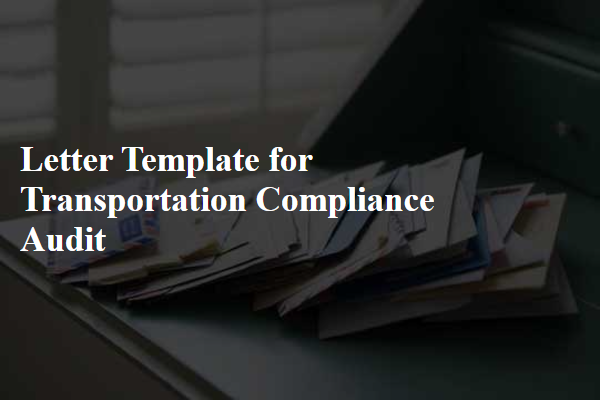
Regulatory Requirements
A transportation compliance audit evaluates adherence to regulatory requirements set by agencies such as the Federal Motor Carrier Safety Administration (FMCSA) in the United States. Key regulations include the Electronic Logging Device (ELD) mandate, which mandates that commercial drivers record hours of service, aimed at reducing fatigue-related accidents. Additionally, the Hazardous Materials Transportation Act oversees the safe transport of hazardous materials, imposing specific packaging and labeling requirements for substances like flammable liquids. The audit assesses documentation such as driver qualification files, vehicle maintenance records, and accident reports to ensure compliance with safety standards and operational protocols, ultimately promoting accountability within freight operations. Regulatory non-compliance may result in fines, legal penalties, or increased scrutiny from regulatory bodies.
Documentation and Record-Keeping
Transportation compliance audits require meticulous documentation and record-keeping to ensure adherence to regulatory standards. Each transport vehicle, such as those in commercial fleets, must have maintenance records detailing inspections, repairs, and servicing dates, often mandated by the Federal Motor Carrier Safety Administration (FMCSA). Driver logs, including hours of service, are vital for demonstrating compliance with rest regulations and preventing fatigue-related incidents on highways. Additionally, fuel usage and environmental compliance documents are necessary to comply with the Environmental Protection Agency (EPA) regulations. Accurate billing records support financial audits and help track expenses related to logistics, while safety inspection checklists ensure all equipment meets operational standards established by industry regulations. Keeping these records organized and easily accessible is essential for an efficient audit process.
Safety Standards
Transportation compliance audits focus on safety standards, ensuring that companies adhere to local and federal regulations in the transportation sector. Auditors assess standards set by entities such as the Federal Motor Carrier Safety Administration (FMCSA) in the United States, which enforces regulations regarding vehicle maintenance and driver safety. Key components include examining vehicle inspection records, maintenance schedules, and driver qualifications, such as valid Commercial Driver's Licenses (CDL) and clean driving records. Compliance with the Hazardous Materials Transportation Act is also scrutinized, particularly for companies handling dangerous goods. Proper documentation, including logs of hours-of-service and incident reports, enhances overall safety and operational efficiency.
Operational Procedures
Transportation compliance audits ensure adherence to legal and operational standards within logistics. Elements include detailed examination of operational procedures like driver logs, vehicle maintenance records, and shipment documentation, essential for ensuring safety and efficiency. Compliance with regulations, such as the Federal Motor Carrier Safety Administration guidelines, requires accurate reporting of hours of service and vehicle inspections. Key metrics often scrutinized include on-time delivery rates and accident frequency, which affect overall performance. Moreover, audits assess the implementation of training programs for personnel, fostering a culture of safety and compliance, critical in reducing legal liabilities and enhancing operational reliability.
Audit Schedule and Deadlines
The transportation compliance audit process involves several critical steps, including scheduled reviews and adherence to strict deadlines. The audit schedule typically spans four weeks, with the first week dedicated to document gathering and preliminary data analysis. Following this, the second week involves site visits to key locations such as distribution centers and shipping hubs, evaluating logistics operations against industry regulations. The third week emphasizes stakeholder interviews, collecting insights from personnel involved in supply chain management. The final week culminates in the compilation of findings and recommendations, which must be completed by the deadline of March 31, 2024. Special focus should be placed on compliance with federal regulations, such as the Federal Motor Carrier Safety Administration (FMCSA) standards and Environmental Protection Agency (EPA) transportation policies. Timely execution of each phase is essential to ensure the accuracy and effectiveness of the audit.
Letter Template For Transportation Compliance Audit Samples
Letter template of transportation compliance audit for regulatory review.
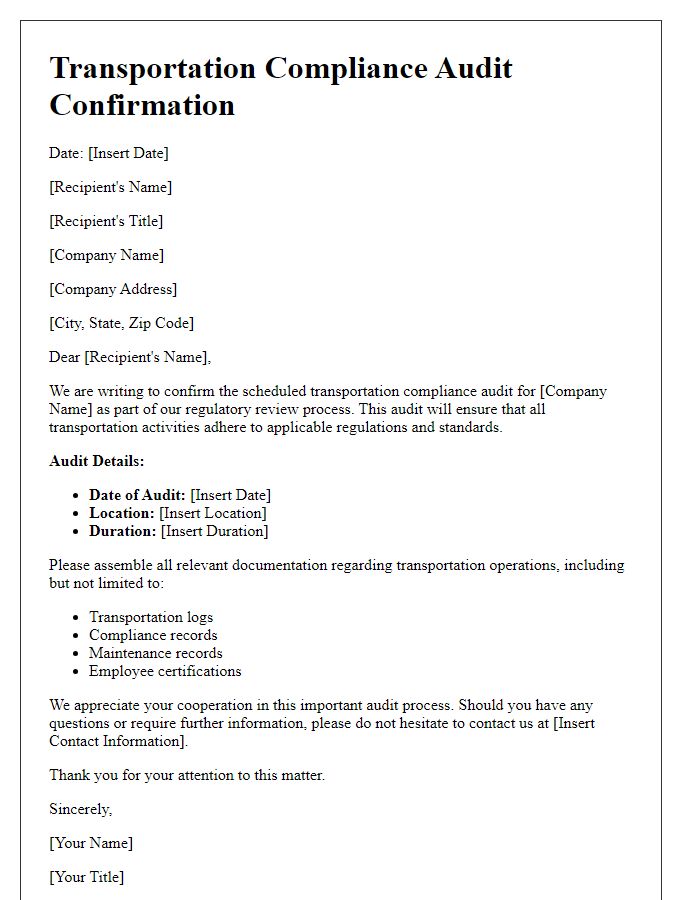
Letter template of transportation compliance audit for internal assessment.

Letter template of transportation compliance audit for third-party verification.
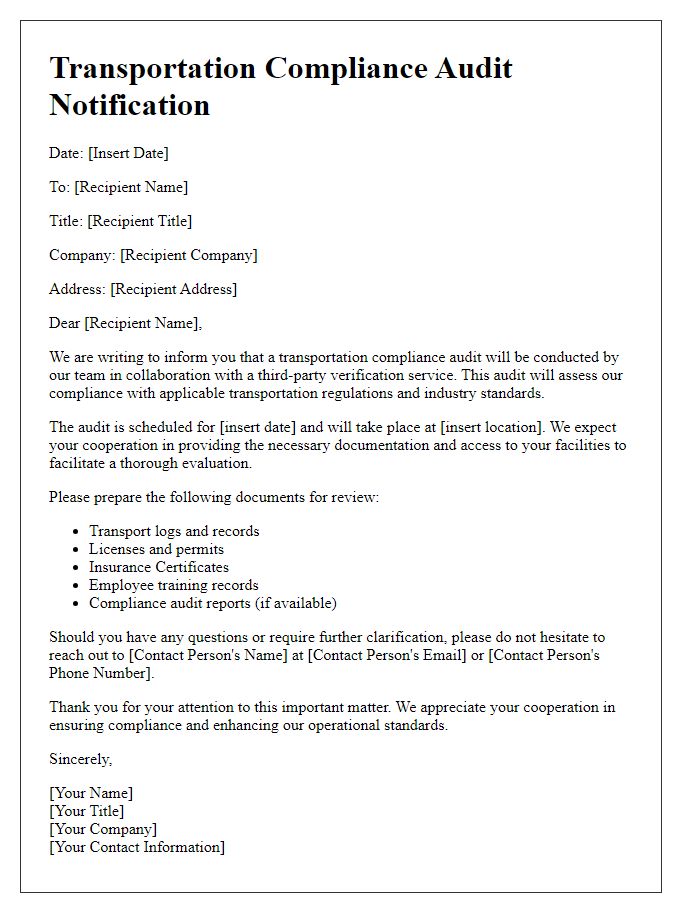
Letter template of transportation compliance audit for safety standards evaluation.
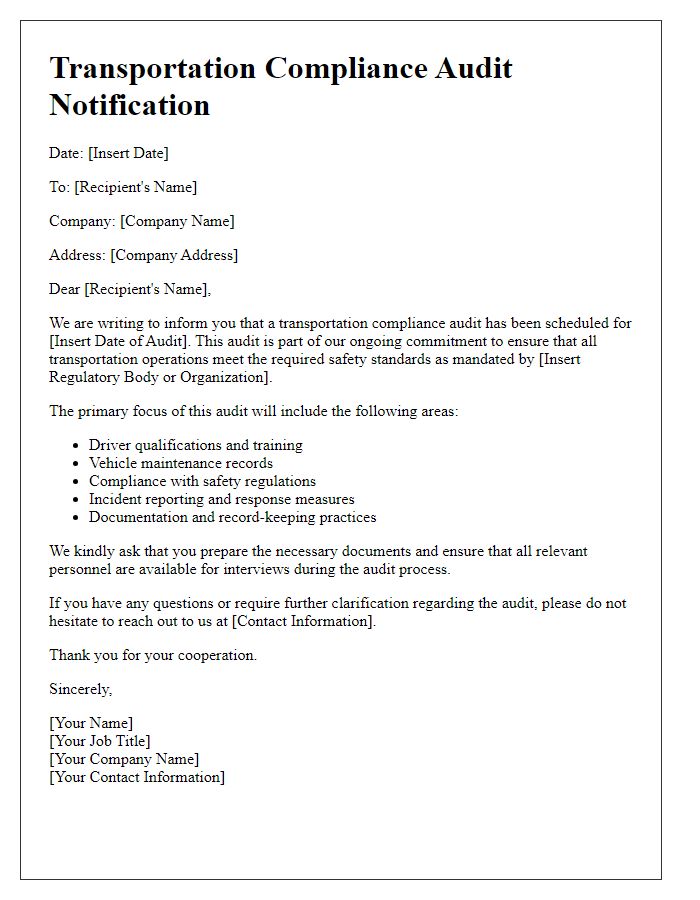
Letter template of transportation compliance audit for environmental impact assessment.
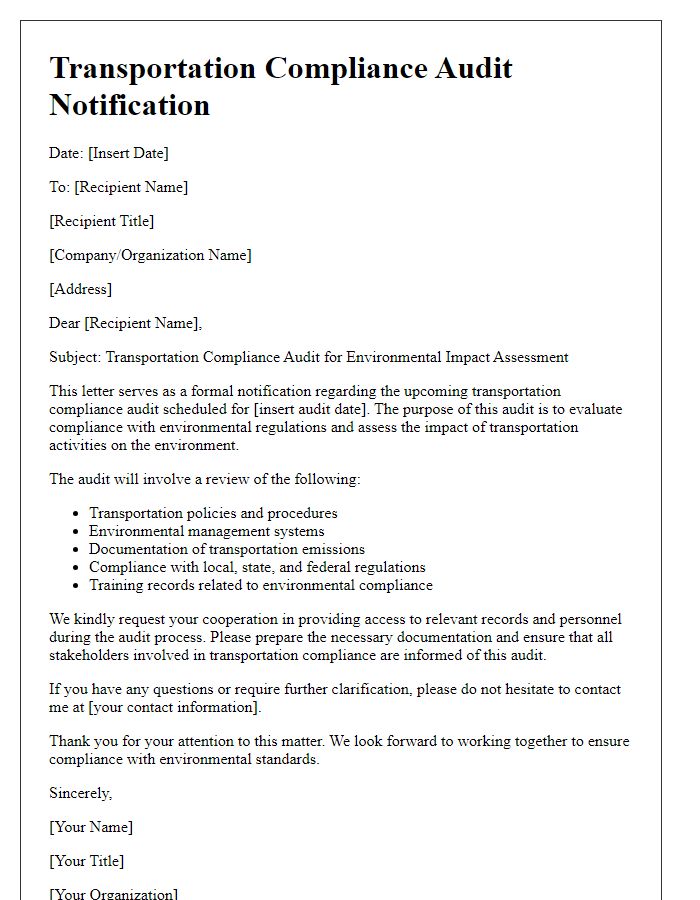
Letter template of transportation compliance audit for contract fulfillment.

Letter template of transportation compliance audit for risk management assessment.
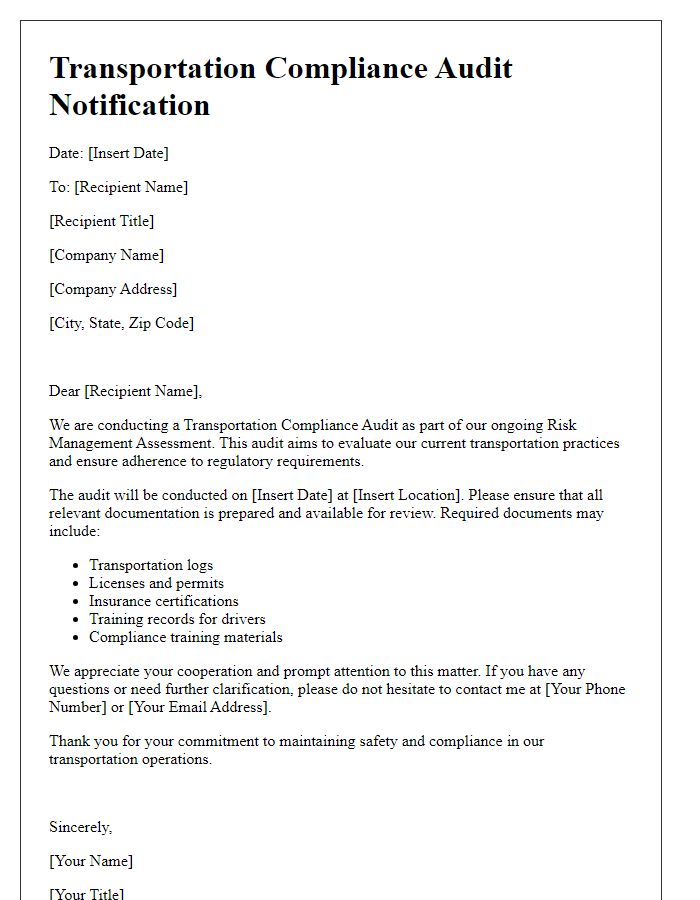
Letter template of transportation compliance audit for operational efficiency review.
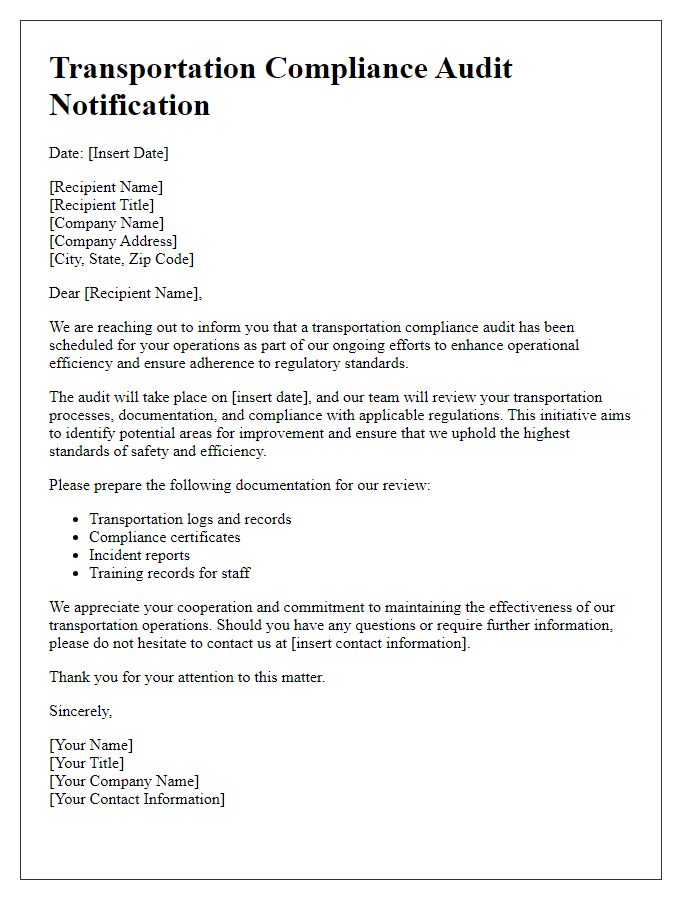
Letter template of transportation compliance audit for employee training verification.
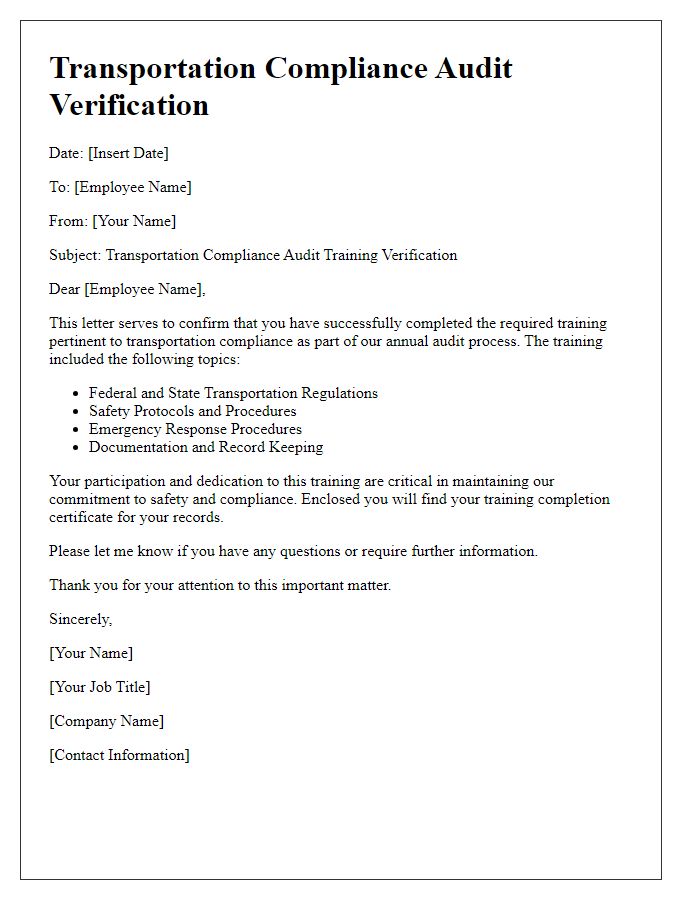

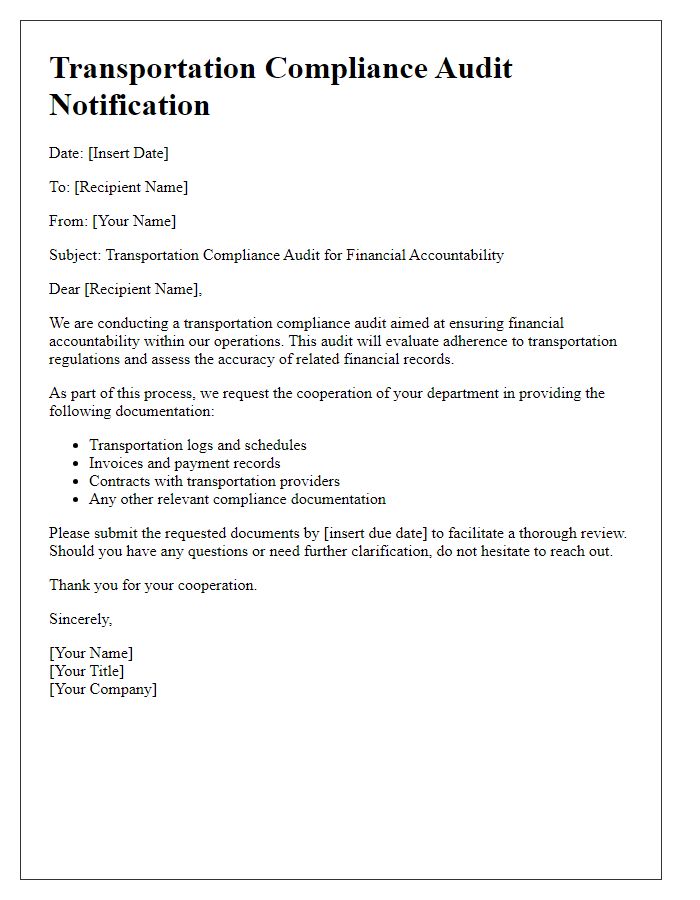


Comments